At the onset of the first autumn cold weather, each summer resident tries to organize events at his site, after which, next season, he will definitely be with the harvest. Autumn work in the garden and the vegetable garden includes not only the collection of fruits and their identification for storage. After the season is completed, it is important to carry out preparatory activities in the garden, dig in the beds, and conduct winter crops.
Garden work
Conducting preparatory seasonal work for the winter in the garden for inexperienced summer residents will seem an optional event. However, the harvest of the next year will depend on the implementation of all agricultural practices.
Preparation of trees and bushes
Care for trees and shrubs in autumn includes: crown formation, fertilizer application, protection against larvae and pathogenic spores wintering under the bark. Carry out activities based on temperature parameters, following the recommendations:
- in early September, it is too early to carry out crown formation, however, damaged and dried branches need to be cut. The sections of the sections should be covered with clay mixed in equal proportions with cow manure;
- Do not remove the leaves falling in October-November, leaving it at the basal zone as a heater and organic fertilizer. Burn it only in case of severe damage by pathogens or insect pests;
- after the first nocturnal autumn frosts and bright sunlight, cracking of the bark occurs during the day. Therefore, to prevent trees from penetrating through the cracks of infections, carry out preventive whitewashing with quicklime with the addition of copper sulfate. To destroy the wintering colonies of fruit and spider mites in the garden in autumn, add colloidal sulfur to the lime mortar;
- fruit and berry and ornamental shrubs and the soil beneath them in September-October handle drugs: Bicol, Bactoculicide or Actofit. Preventive spraying will destroy the leaf-eating pest, strawberry-raspberry weevil, sawflies;
- till the beginning of November, to plant seedlings in the garden: apple trees, pears, cherries, currants, raspberries, strawberries, ornamental shrubs.
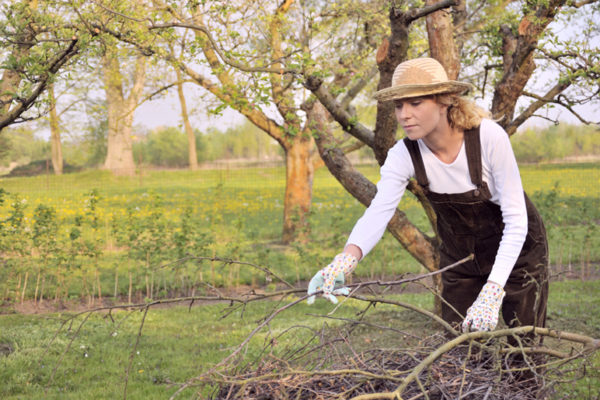
Feeding and watering
To prepare the plants for wintering, it is necessary to carry out an abundant artificial autumn watering of the soil, which differs from the summer in the large use of a larger volume of water. In moistened soil under trees and shrubs, an intensive process of internal energy transfer from warmer to less heated areas of the soil occurs. Due to the increased heat transfer from the lower layers of the soil, the root system warms up well even in severe frosts.
To carry out artificial irrigation, dig a trench 40 cm wide and 45 cm deep in the root zone of the tree. After abundant wetting, the state of the soil at its bottom will help determine the moisture level:
- After squeezing a handful of earth, attach a lump to a thin napkin. If a wet trace remains on the paper, the soil is sufficiently moistened;
- After compressing the lump of soil, press it to a piece of thin paper.If there is no wet imprint on it, the soil is not spilled enough;
- as a result of squeezing a handful of earth, it crumbles - fill the soil with a large volume until completely moistened.
Carrying out autumn dressing of plants is an important agricultural technique. Trees and shrubs growing in one place for many years choose phosphorus, potassium, nitrogen, and trace elements from the soil. The lack of important chemicals for life will affect the yield, reduce the immunity of plants. After fruiting, after 14-16 days from mid-September to the end of October, top-dress with complex fertilizer.
Do not forget that excessive introduction of nitrogen compounds will cause increased sap flow, active shoot growth. This process will lead plants to diseases, decreased immunity and even death. Therefore, you should use fertilizers that do not contain nitrogenous substances such as: Potassium monophosphate, Ecoplant, Good owner No. 2.
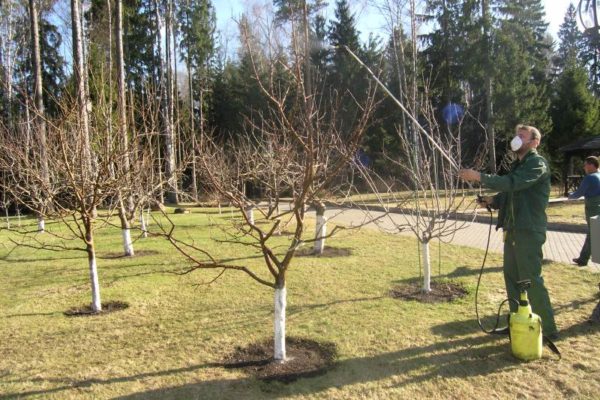
Soil treatment
Carrying out top dressing and water-charging irrigation, you should not forget about the tillage under crops. If you do not complete these events comprehensively, you can be left without a crop for the next season. Before processing the soil, it is necessary to rake in the root zone all the fallen leaves, as larvae of insect pests and spores of obligate parasites live in them.
After falling leaves, remove and burn them. Dig the soil, adding copper sulfate or Bordeaux fluid to it with a shovel or pointed pitchfork to a depth of at least fifteen centimeters.
Pruning
Before the onset of stable frosts, trees and shrubs should be completely thinned out or partially shortened by branches and shoots. To do these procedures in the autumn in the garden at the cottage is very important. An agrotechnical technique helps to enhance the vegetative growth of cropped shoots in the next season. Promotes the development of fruit buds and wood. In addition, heavy snowfall in winter can harm long branches, breaking them. Reducing the width and height of the crown of plants will rejuvenate them, will allow to maintain the coefficient of productivity at the proper level. To be circumcised:
- shrunken, unhealthy twigs with barren buds;
- interwoven young shoots;
- branches growing inward, greatly thickening the crown;
- shrunken apical parts;
- root shoots;
- fatty vertical shoots developing from sleeping kidneys.
Preparing the garden for winter
Summer residents with no experience believe that with the completion of the harvest, activities at the sites are completed. And only experienced gardeners know that from September to October there is still a lot of work. And the harvest of the next season will depend on the measures taken in the autumn in the garden.
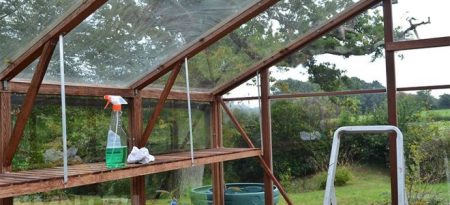 You may be interested in:
You may be interested in:Harvesting and storage preparation
When harvesting in the fall, it is important to harvest the fruits on time. If harvesting is too early, the gross harvest will be smaller, the late - some of the fruits will be affected by rot and die. Depending on the characteristics of the crop, harvesting can be carried out in one or more stages. At one time they collect: garlic, onions, root crops. For several receptions it is worth choosing: sweet and bitter peppers, eggplant, tomatoes, cucumbers, gourds. To get a crop of vegetables and herbs, you should know when and how to properly collect them.
- Choose potatoes in the absence of rainfall. When picking potatoes in small areas, you can immediately sort the products into separate containers.Leave the seed in the sun until the green color appears on the skin. Begin digging from early September to mid-October. With a delay in harvesting, tubers in the soil will be affected by pathogenic spores and begin to sprout.
- Pumpkin crops can be without consequences in the garden until small frosts. In September, as soon as the peel of the ripened fruits coarsens, pick vegetables, put them in storage in cellars or storages at a temperature not exceeding +15 degrees.
- In October, cut off the heads of white, kohlrabi, red cabbage. Vegetables calmly withstand night cooling to -4 degrees. However, with frosts of -8 degrees and freezing of the stalk, cabbage will not be restored. Frozen fruits after thawing will become soft, not stored.
- Tomatoes ripened by the beginning of September in open ground should be picked upon reaching pink-brown fruits, in harvested film shelters, the harvest should be extended until early November.
- At an air temperature of at least -2 degrees, dig up carrots. Dig up the root crops with a tool, select, sort, dry in the sun for several hours, cut the tops.
- Aft and dining room harvest beets before the onset of stable frosts. For good preservation, try not to damage the fruit when digging. Mechanical damage will affect the keeping quality of the vegetable. With scratches and cuts, root crops will last no more than two months.
- Late varieties and hybrids of onions should be selected until mid-October with full lodging of the apical part. For good keeping quality, turnip dry in the sun for three days. Then determine in a container or braid, store in a dry ventilated area at a temperature of +8 to +14 degrees.
- It’s worth sampling cucumbers planted in the second turn in the autumn as the fruits are poured. In this case, to collect even overgrown and clumsy fruits.
Harvesting and collecting seeds
Gardeners with considerable experience know that a good harvest can only be obtained by planting proven seeds. Therefore, providing yourself with seed material collected independently is an important event. It is worth knowing that the most productive are those seeds that have ripened on the very first fruit or flower. A plant that has shown all its best qualities during the growing season should be immediately marked by tying a bright piece of tissue to it. And seed boxes of flowers that can scatter grains in strong winds and tie up with gauze pieces.
An experienced gardener will procure seed only on a fine day. Seed boxes during collection must be completely dry and ripe. Remove the grains from the ripened fruit, thresh or rinse in a fine sieve under running water, and spread out in a thin layer to dry. Scatter the dried material in paper bags, mark the name of the variety and the year of collection, store at a temperature of -5 to +28 degrees.
Site cleaning
The annual cultivation of vegetables and herbs in the same place leads to soil depletion, the accumulation of pathogens, and the growth of weeds. With overgrown weeds, loosen the area with a wide hoe, select all milk roots: birch, thistle, milkweed, wheatgrass. In order not to be left without a harvest next season, all plant residues should be removed, and mineral fertilizers should be introduced into the soil. Before plowing plots to make granular complex top dressing, which deoxidize the soil, improve its structure.
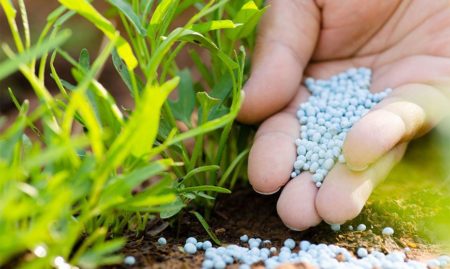 You may be interested in:
You may be interested in:Planting green manure and feeding
Sowing the seeds of "green fertilizer", which is grown to normalize the state of the soil, is carried out on an excavated area cleared of dried vegetation and weeds. Soil siderates It should be before the onset of frost, starting to land from the beginning of September. The first autumn month is characterized by warm weather, so after 7-10 days after sowing, the plants will sprout together. After two to three weeks, the vegetative mass can be mowed or embedded in the soil. The rest of the plants will serve as a “holder” of snow. As siderates, gardeners plant:
- oil radish;
- mustard;
- oats;
- rye;
- buckwheat;
- amaranth.
Autumn planting
The advantage of autumn plantings is that in the process of stratification, their sprouts will be stronger and more durable than plants planted in the spring. In addition, gardeners will have more free time in March-April, and the crop of vegetables sown before winter can be harvested 10-12 days earlier. From early September to mid-October, carry out landings:
- winter garlic;
- onions;
- zucchini;
- carrots;
- sorrel;
- parsley root and stem;
- dill;
- lettuce.
Plant insulation
After sowing, in order to better stick seeds to the soil, tamp the soil above the furrows. With a steady decrease in temperature to -8 degrees, insulate crops. As a covering material to use: foliage from trees, wood shavings, husks from sunflower seeds, corn stalks. In January-February, snow is poured over the sown areas.
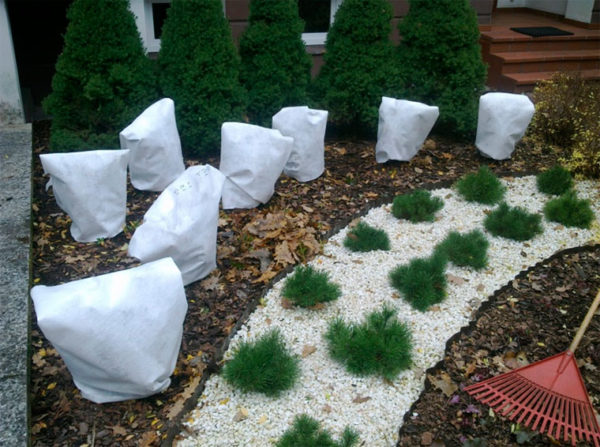
Disease Prevention
Conducting preventive measures will reduce the likelihood of seed damage by wintering pest larvae and obligate parasite spores. After clearing the sites of plant debris, disinfect the soil with a 40% formalin solution or blue vitriol.
Additional work
In addition to the basic agricultural techniques, you should not forget about conducting secondary, no less important events:
- clean the garden tool from dirt, treat with chlorhexidine, lubricate with engine or industrial oil;
- from garden containers in which water was kept all season, drain the remaining liquid, determine for storage in a waterproof room;
- prepare the soil mixture for growing seedlings. The best in structure is considered to be the soil taken from the knolls dug with blinds and moles;
- starting in early November, chop the chubuki: grapes, currants, gooseberries, ornamental shrubs for spring rooting.
Reviews
Gardeners with experience, annually actively preparing their plots for winter, share their impressions after the autumn work.
Michael Tula
Winter in our region is characterized by sharp cooling and autumn frosts up to -12 degrees. Therefore, without insulation of beds and young seedlings can not do. Already at the beginning of September I pin the grape shoots to the ground, mulch the root zone of peaches, cherries, raspberries. I wrap the most non-frost-resistant plants with agrofibre. Timely warming in the fall makes it possible to winter well in the crops in our risky farming zone.
Maria Yekaterinburg
At our summer cottage there was a piece of a vegetable garden on which any vegetables grew very poorly. In the fall, after digging up potatoes, my husband and I decided to plant mustard on the infertile part of the garden. The sowing was carried out on September 10, and in mid-October the overgrown top was mowed, leaving the roots in the soil.In the spring, they dug up the plot, planted potatoes. We were very pleased with the harvest of root crops, so we harvested 4 times more potatoes than before the autumn sowing of mustard.
The main task of gardeners in the fall is not only cleaning the plots and collecting the remaining fruits. Fulfillment of all necessary agricultural practices will be the key to a rich harvest in the next season.

 How to decorate and highlight garden paths in an original way?
How to decorate and highlight garden paths in an original way?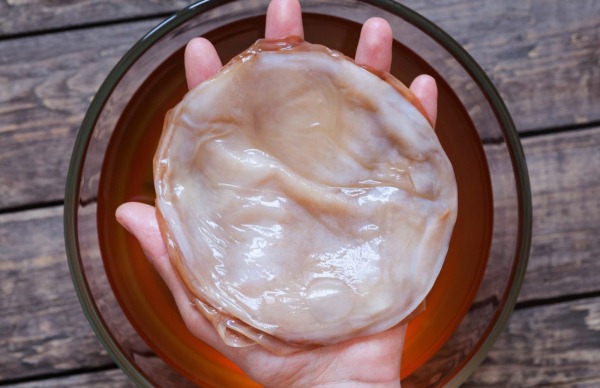 How to grow Kombucha "from scratch"?
How to grow Kombucha "from scratch"?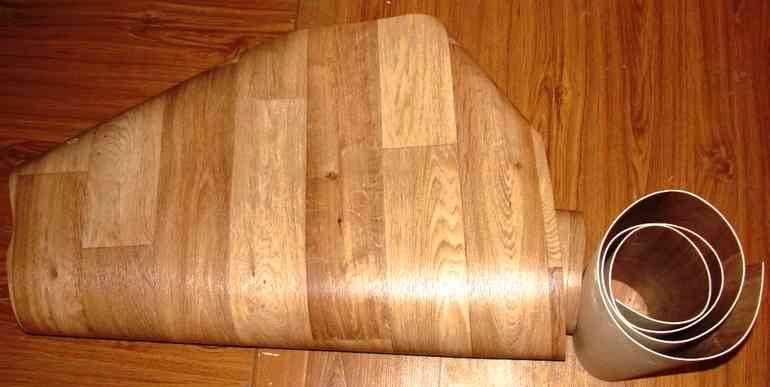 8 practical ideas for using linoleum in the garden
8 practical ideas for using linoleum in the garden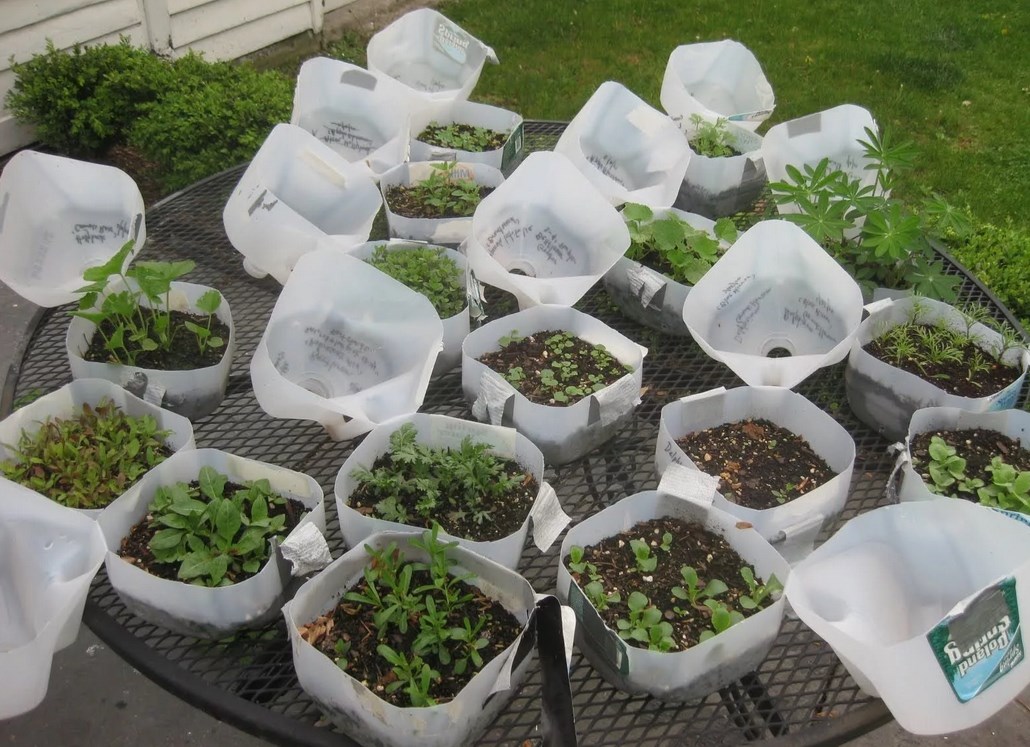 Useful crafts from do-it-yourself canisters for the garden
Useful crafts from do-it-yourself canisters for the garden